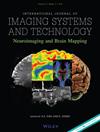Multiscale attention network for retinal vein occlusion classification with multicolor image
IF 3
4区 计算机科学
Q2 ENGINEERING, ELECTRICAL & ELECTRONIC
引用次数: 0
Abstract
Recently, automatic diagnostic approaches widely use various retinal images to classify ocular diseases. And retinal vein occlusion (RVO) is the second most common retinal vascular disease after diabetic retinopathy. In clinical practice, ophthalmologists are usually accustomed to resorting to images of one modality. But single‐modality images often ignore other modality‐specific information. To solve this problem, this paper uses a novel retinal imaging, the multicolor (MC) imaging, for RVO recognition. It can obtain four multiple modal images with different wavelengths to provide much richer information about retinal features. Since the MC images contain local and global pathologies at multiple scales, a multiscale attention structure is proposed to recognize RVO. In simple terms, this structure uses Resnet as the backbone network for feature extraction, with simultaneous input of images in four modalities. Then, the feature maps at different scales are fed into an attention module to fuse the global and local features, which combines two attention mechanisms, the channel attention mechanism and the spatial attention mechanism. The extensive experimental results demonstrate that our proposed framework achieves quite promising classification performance on the fundus diseases and normal images.多尺度注意力网络在彩色图像视网膜静脉阻塞分类中的应用
近年来,自动诊断方法广泛使用各种视网膜图像来对眼部疾病进行分类。视网膜静脉阻塞(RVO)是仅次于糖尿病视网膜病变的第二常见视网膜血管疾病。在临床实践中,眼科医生通常习惯于使用一种模式的图像。但是单模态图像常常忽略其他模态特定的信息。为了解决这个问题,本文使用了一种新的视网膜成像,即多色(MC)成像来识别RVO。它可以获得四个不同波长的多模态图像,以提供更丰富的视网膜特征信息。由于MC图像包含多尺度的局部和全局病理,因此提出了一种多尺度注意力结构来识别RVO。简单地说,该结构使用Resnet作为特征提取的骨干网络,同时输入四种模态的图像。然后,将不同尺度的特征图输入到注意力模块中,以融合全局和局部特征,该模块结合了两种注意力机制,即通道注意力机制和空间注意力机制。大量的实验结果表明,我们提出的框架在眼底疾病和正常图像上取得了相当有前途的分类性能。
本文章由计算机程序翻译,如有差异,请以英文原文为准。
求助全文
约1分钟内获得全文
求助全文
来源期刊

International Journal of Imaging Systems and Technology
工程技术-成像科学与照相技术
CiteScore
6.90
自引率
6.10%
发文量
138
审稿时长
3 months
期刊介绍:
The International Journal of Imaging Systems and Technology (IMA) is a forum for the exchange of ideas and results relevant to imaging systems, including imaging physics and informatics. The journal covers all imaging modalities in humans and animals.
IMA accepts technically sound and scientifically rigorous research in the interdisciplinary field of imaging, including relevant algorithmic research and hardware and software development, and their applications relevant to medical research. The journal provides a platform to publish original research in structural and functional imaging.
The journal is also open to imaging studies of the human body and on animals that describe novel diagnostic imaging and analyses methods. Technical, theoretical, and clinical research in both normal and clinical populations is encouraged. Submissions describing methods, software, databases, replication studies as well as negative results are also considered.
The scope of the journal includes, but is not limited to, the following in the context of biomedical research:
Imaging and neuro-imaging modalities: structural MRI, functional MRI, PET, SPECT, CT, ultrasound, EEG, MEG, NIRS etc.;
Neuromodulation and brain stimulation techniques such as TMS and tDCS;
Software and hardware for imaging, especially related to human and animal health;
Image segmentation in normal and clinical populations;
Pattern analysis and classification using machine learning techniques;
Computational modeling and analysis;
Brain connectivity and connectomics;
Systems-level characterization of brain function;
Neural networks and neurorobotics;
Computer vision, based on human/animal physiology;
Brain-computer interface (BCI) technology;
Big data, databasing and data mining.
 求助内容:
求助内容: 应助结果提醒方式:
应助结果提醒方式:


